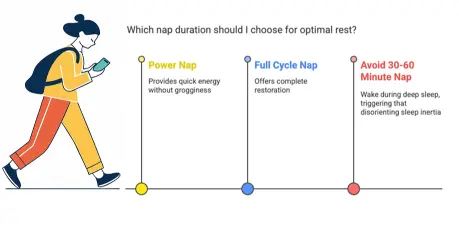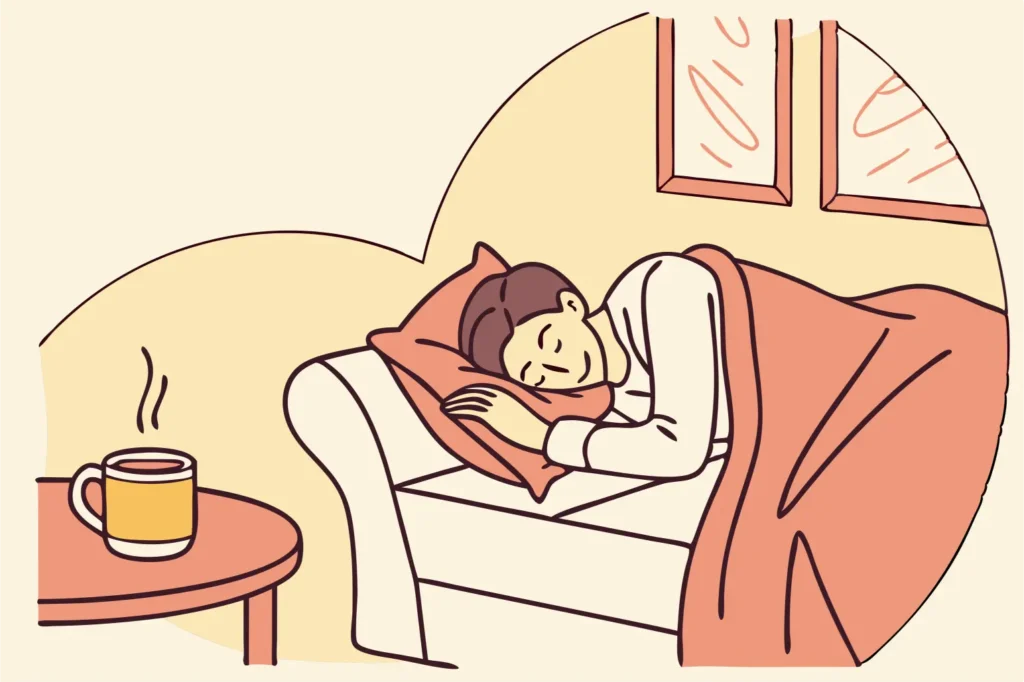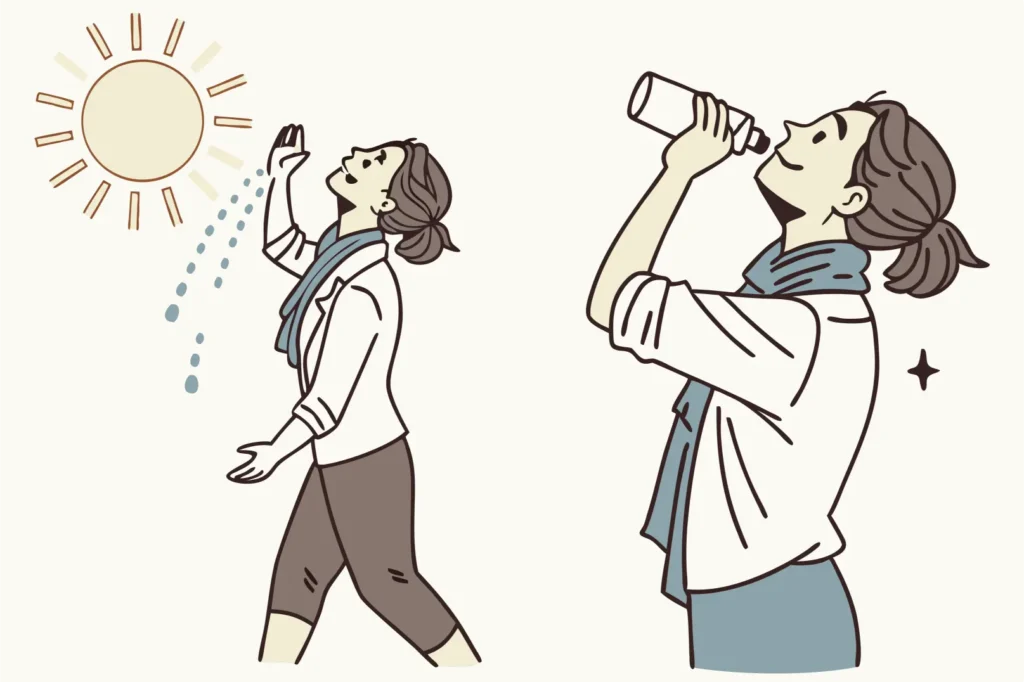Table of Contents
In the relentless pace of professional life, finding that perfect energy boost can feel like searching for the corporate holy grail. As someone who’s personally experienced the transformation that strategic napping can bring, I’m here to share what science and experience confirm: the right nap can be your secret weapon. But here’s the catch – not all naps are created equal, and timing is everything when it comes to the best nap length for energy.
The Science Behind Naps and Energy Restoration
When you close your eyes for a midday snooze, your brain cycles through different sleep stages. Each complete cycle runs about 90-110 minutes, moving from light sleep into deeper stages and eventually REM sleep. This process isn’t just random downtime – it’s a sophisticated biological reset.
The magic (or misery) of your nap experience comes down to which sleep stage you’re in when that alarm blares. Wake up during deep sleep, and you’ll face the dreaded “sleep inertia” – that zombie-like fog that can leave you feeling worse than before you closed your eyes. Harvard Health confirms this groggy state can temporarily tank your cognitive function, which is exactly what busy professionals can’t afford.
If you’re consistently tired after 8 hours of sleep, strategic daytime napping might be the missing piece in your energy management puzzle.

Best Nap Lengths for an Energy Boost
The Power Nap (10-20 Minutes): Quick Energy Without Grogginess
For most professionals racing between meetings and deadlines, the power nap reigns supreme. At just 10-20 minutes, it’s the cheat code of restorative rest.
Why it works: This short duration keeps you in light sleep stages, delivering a quick hit of alertness without the post-nap hangover. It’s like rebooting your mental computer without starting a full system update.
The power nap benefits are substantial – NASA researchers discovered that pilots taking 20-30 minute naps showed over 50% improvement in alertness and 30% greater proficiency. When your job involves high-stakes decision-making (and whose doesn’t these days?), that’s an edge worth having.
The Full Cycle Nap (90 Minutes): Complete Restoration
When you’ve got more time – perhaps on a weekend or before a major presentation – the 90-minute nap offers comprehensive restoration. This duration allows your brain to complete a full sleep cycle, including precious REM sleep.
The beauty of this approach is that you’re likely to wake during a lighter sleep stage, avoiding the grogginess associated with interrupted deep sleep. It’s the difference between being jarred awake mid-dream and naturally transitioning to wakefulness.
Nap Lengths to Avoid for Maximum Energy
If there’s one takeaway from my years of nap analysis, it’s this: avoid the 30-60 minute trap. This duration is the danger zone because you’ll likely wake during deep sleep, triggering that disorienting sleep inertia that can derail your afternoon.
Sleep experts warn that this grogginess can take 30-60 minutes to shake off – time that busy professionals simply don’t have to spare. Unless you’re severely sleep-deprived, steer clear of this intermediate duration.
For many, this mid-afternoon energy dip leads to unhealthy alternatives. Instead of reaching for another energy drink with potential risks, consider how a properly timed nap could provide cleaner, more sustainable energy.

Strategic Napping Techniques for Professional Energy Needs
Different work scenarios call for different napping strategies:
The Caffeine Nap (20 Minutes): The Ultimate Energy Hack
When deadlines loom and you need maximum alertness, try this pro move: drink coffee immediately before a 20-minute nap. By the time you wake, the caffeine kicks in, delivering a double-whammy energy boost. It’s like drafting behind a truck before accelerating past it.
This technique is particularly effective when you need to beat afternoon fatigue that typically strikes between 2-4 PM.
The Recovery Nap (90 Minutes): Sleep Deficit Solution
After a late night of project work or early morning calls with international teams, the recovery nap helps close your sleep deficit. Research indicates this approach is ideal for making up lost sleep without disrupting your next night’s rest.
If you’ve identified potential causes of low energy in your life, strategic recovery naps can be part of your comprehensive energy management plan.

How Long Should I Nap? Evidence-Based Benefits You Can’t Ignore
The data supporting energy-boosting naps is compelling:
- Productivity boost: MIT economists found that implementing daily 30-minute naps increased data-entry employee productivity by 2.3% over three weeks. The research quantifies what nappers intuitively know – rest translates to results.
- Mental reset: Dr. Subhendu Rath from UK HealthCare describes naps as a mental reset button, enhancing focus and improving mood throughout demanding workdays, as noted in sleep medicine publications.
- Long-term brain health: Beyond immediate energy gains, UCL research suggests that regular napping may slow age-related brain shrinkage – an investment in your cognitive longevity.
Best Nap Practices for Energy and Productivity at Work
Timing Your Nap for Maximum Energy Return
Schedule your nap between 1-3 PM when your body naturally experiences an energy dip. This aligns with your circadian rhythms and won’t interfere with nighttime sleep – crucial for maintaining overall sleep health in demanding professional roles.
Proper nap timing complements other professional productivity tips like high-energy morning routines that set you up for success throughout the day.
Optimizing Your Nap Environment for Rapid Energy Restoration
Even in a professional setting, you can optimize your nap space:
- Find a quiet location (empty conference room, car, or dedicated office nap space)
- Use an eye mask and earplugs or noise-canceling headphones
- Set a firm alarm (non-negotiable for professionals)
- Consider brief exposure to natural sunlight before your nap to regulate your circadian rhythm
Post-Nap Activation Protocol for Sustained Energy
After your strategic rest, jumpstart alertness with:
- 30 seconds of light stretching
- Face washing with cool water
- Brief exposure to natural light
- A few deep breaths before returning to work
- Proper hydration for energy to maximize your post-nap alertness

The Bottom Line: Nap Duration for Professional Energy Optimization
Your optimal nap strategy comes down to two evidence-backed options:
- When time is tight: 10-20 minute power nap for immediate alertness without downtime
- When recovery is priority: 90-minute complete cycle for comprehensive restoration
The difference between high performers and the perpetually exhausted often comes down to these strategic energy management techniques. As someone who’s analyzed napping benefits firsthand, I can attest that the right nap at the right time doesn’t just feel good – it transforms your professional capacity.
Remember that napping is just one component of holistic energy management. Consider evaluating your diet for foods that cause fatigue while incorporating more foods that improve mitochondrial function for cellular energy production.
When quick fixes are needed, explore these quick energy fixes alongside your strategic napping routine. Some professionals even find that supplements like liquid vitamin B12 complement their napping strategy for optimal energy levels.
Your move now: block 20 minutes on tomorrow’s calendar and discover what NASA pilots, MIT researchers, and successful professionals already know – the best nap length for energy isn’t just a luxury, it’s a competitive advantage.





